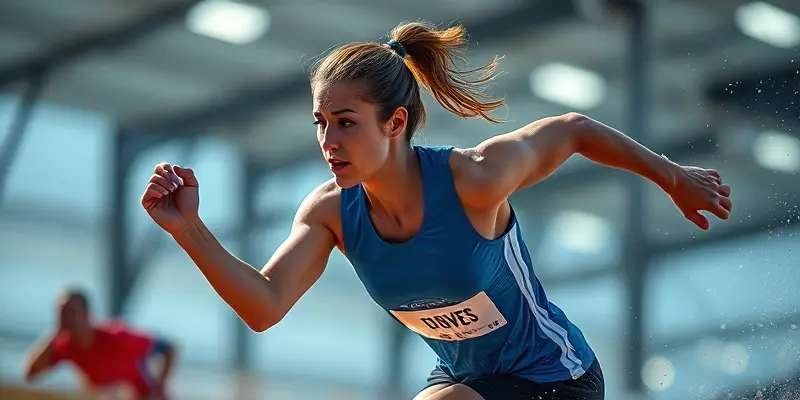Skill Acquisition: The Hidden Key to Injury Prevention and Recovery
Injuries can sideline the best of us—but most fitness enthusiasts don’t realize how much your learning journey shapes your risk and your comeback. Whether you’re just starting out or pushing for a new PR, understanding how skills are acquired can keep you strong, safe, and motivated. Let’s break down this science-backed approach that benefits everyone, from absolute beginners to seasoned athletes.
The Three Stages of Skill Acquisition
Every move, squat, or sprint you master goes through three stages: Cognitive, Associative, and Autonomous. Recognizing which stage you’re in doesn’t just improve your performance—it protects your body.
Cognitive Stage: The Newbie Zone
At this point, everything feels awkward. You’re processing cues, making frequent errors, and every rep takes real concentration.
Real-life example: Think of your first time attempting a deadlift. You overthink stance, grip, and hip position, maybe even watching yourself in the mirror for feedback.
Coaching Tips for Safety:
- Start with low or no weights: Prioritize form over load.
- Ask for feedback: A coach or video analysis helps correct unsafe habits.
- Use visual aids: Diagrams or mirrors reinforce safe joint alignment.
Nutrition Note: Early learning is stressful—support muscle adaptation with adequate protein and hydration.
Associative Stage: Building Confidence
Now, your movements are smoother. You recognize mistakes, self-correct, and start adding load or speed without losing form.
Example: You catch yourself rounding your back mid-lift and fix it without anyone prompting you. Progress!
Coaching and Rehab Tips:
- Gradually increase complexity: Add resistance or dynamic movements once basic form is stable.
- Deliberate practice: Incorporate tempo work and pause reps to reinforce quality.
- Monitor fatigue: As you get stronger, risk of overuse grows—respect rest days.
Recovery Insight: Start introducing tools like foam rollers and dynamic warmups to aid tissue health.
Autonomous Stage: The Expert Groove
Here, movements are almost automatic. You focus on tactics, not basics. This stage is where elite athletes live, but complacency and overuse can sneak in.
Example: A seasoned runner maintains perfect stride even when distracted during a busy race.
Coaching and Advanced Recovery:
- Periodic technique checkups: Avoid bad habits that creep in over time.
- Sport-specific rehab: Replicate competition scenarios in your recovery.
- Monitor training load: Pay special attention to chronic aches—these are warning signs for cumulative injuries.
Nutrition for Longevity: Support volume with micronutrients (vitamin C, zinc) and adjust calories according to training load. For more on vitamin C’s role in injury prevention, see The Power of Vitamin C in Recovery and Injury Prevention: Science-Based Strategies for Every Athlete.
Injury Prevention and Recovery: Matching Methods to Stages
For Beginners
- Emphasize structured, supervised practice.
- Avoid overload at all costs.
- Build body awareness with slow, controlled movements.
For Intermediate/Advanced
- Use sport-mimicking drills and open-scenario training.
- Monitor load to head off overuse injuries.
- Invest in advanced recovery: massage guns, contrast baths, periodized rest.
The Role of Mindset and Motivation
- In early learning, clear goals and positive coaching feedback keep you engaged.
- As you master skills, use visualization and progress tracking for ongoing motivation. For strategies on using mental techniques in recovery, check out Unlock Faster Recovery with Visualization for Healing.
- If rehab is needed, match your mindset work (like imagery or positive self-talk) to your skill stage for best results.
Takeaway Checklist: Injury-Smart Skill Building
- Identify your stage: Are you learning, refining, or mastering?
- Match your practice: Use the right drills, feedback, and recovery methods per stage.
- Prioritize nutrition: Fuel your needs—don’t skip recovery basics!
- Stay curious: Regularly review your form—even experts need tune-ups.
- Listen to your body: Pain is feedback, not a challenge.
Final Thoughts
Building skill and preventing injury isn’t just for the pros—it’s essential for anyone who wants to train hard and recover smart. Next time you step onto the gym floor, ask yourself: “Where am I in my skill journey?” and adjust accordingly. Your body (and your future PRs) will thank you.
Written by [Your Name], fitness and health expert with 10+ years’ experience in coaching, rehabilitation, and performance training. Ready to level up your recovery? Join the GymPulse Club community.

